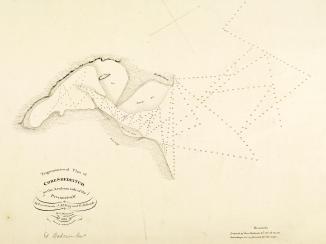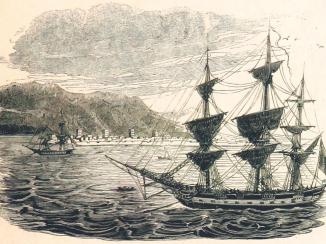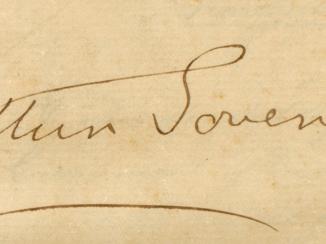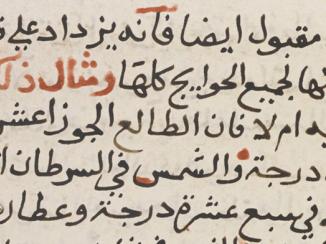‘Book 155 1848’ Vol 155 Letters inward
IOR/R/15/1/112
44 items in this record
Search within this record
The record is made up of 1 file (20 folios). It was created in 1 Mar 1848-21 Dec 1848. It was written in English. The original is part of the British Library: India Office The department of the British Government to which the Government of India reported between 1858 and 1947. The successor to the Court of Directors. Records and Private Papers Documents collected in a private capacity. .
About this record
- Content
The file contains letters received by Major Samuel Hennell, British Political Resident A senior ranking political representative (equivalent to a Consul General) from the diplomatic corps of the Government of India or one of its subordinate provincial governments, in charge of a Political Residency. in the Persian Gulf The historical term used to describe the body of water between the Arabian Peninsula and Iran. , Bushire, from Arthur Malet, Chief Secretary to the Government of Bombay From c. 1668-1858, the East India Company’s administration in the city of Bombay [Mumbai] and western India. From 1858-1947, a subdivision of the British Raj. It was responsible for British relations with the Gulf and Red Sea regions. in the Political Department, Bombay Castle written between July and December 1848.
Arthur Malet’s letters contain information, guidance and instructions from the Governor in Council of Bombay to the Resident. The majority of his letters are preceded or followed by enclosures. The enclosures are copies of other relevant letters exchanged between several British Government officials, mainly: Captain Atkins Hamerton, Her Majesty’s Consul and the Honourable Company’s (East India Company’s) Agent in the dominions of the Imam of Muscat, Zanzibar; the Honourable the Court of Directors The London-based directors of the East India Company who dealt with the daily conduct of the Company's affairs. (of the East India Company), London; Mr George Cornewall Lewis, Secretary to the Board of Commissioners for the Affairs of India (also known as the Board of Control Formally known as the Board of Commissioners for the Affairs of India, it was established by an Act of Parliament in 1784 to supervise the activities of the East India Company. ), London; Mr Edward John Stanley, Foreign Office, London on behalf of Lord Palmerston (Henry John Temple, 3rd Viscount Palmerston) the British Secretary of State for Foreign Affairs; Mr Charles Edward Trevelyan, Treasury Chambers, London on behalf of the Lords Commissioners of Her Majesty’s Treasury, London.
The correspondence mainly discusses the suppression of the maritime slave trade between East Africa and the Persian Gulf The historical term used to describe the body of water between the Arabian Peninsula and Iran. and its implications for British foreign policy, relations and interests in the region. There are two main areas of discussion in the correspondence.
Slave trafficking: Captain William Lowe’s seizure near Bushire of 11 Muskat [Muscat] ships on route to Bussora [Basra] with slaves on board, the importation into Lingah [Bandar-e-Lengeh] of 15 slaves from Zanzibar, the failure of the Imam of Muscat to enforce the anti-slavery provisions of his treaty with Great Britain in 1845.
Anti-slavery measures: legal opinions about enacting legislation in the British Parliament, to give British Vice Admiralty courts in India and elsewhere, the power to hear cases involving slave ships captured by the British naval force in the Persian Gulf The historical term used to describe the body of water between the Arabian Peninsula and Iran. , in accordance with the terms of the Treaty of 2 October 1845 with the Imam of Muscat and the Treaties concluded by Major Hennell in April and May 1847, with the several Arab Chiefs of the Trucial Coast A name used by Britain from the nineteenth century to 1971 to refer to the present-day United Arab Emirates. Sheikhdoms.
- Extent and format
- 1 file (20 folios)
- Arrangement
The letters are arranged more or less chronologically, from folio 7 onwards. Most letters are either followed by copies or extracts from earlier letters that were enclosed with them.
- Physical characteristics
Foliation: the contents are numbered 2 to 21, from the front to the back of the file. The numbering is written in pencil on the recto The front of a sheet of paper or leaf, often abbreviated to 'r'. , in the top right corner and encircled. The front cover of the file is numbered 1. The inside of the back cover is numbered 22. This is the main numbering system and should be used for referencing this volume.
Pagination: the contents are also irregularly numbered 152-158, 150-151, 159-164, 217, 222-223, 225-226, 260, 281-286 and 290, from the front to the back of the file. The numbering is written in ink, usually on both the recto The front of a sheet of paper or leaf, often abbreviated to 'r'. and verso The back of a sheet of paper or leaf, often abbreviated to 'v'. ; in the top right and left corner respectively. All blank pages and the majority of pages containing brief details such as the name of the sender or the date the letter was sent, are unnumbered.
Condition: imperfect folios 4, 6, and 9.
- Written in
- English in Latin script
- Type
- Letter book
Archive information for this record
- Original held at
- British Library: India Office The department of the British Government to which the Government of India reported between 1858 and 1947. The successor to the Court of Directors. Records and Private Papers Documents collected in a private capacity.
- Access conditions
Unrestricted
- Archive reference
- IOR/R/15/1/112
- Former external reference(s)
- Volume 155
- Date(s)
- 1 Mar 1848-21 Dec 1848 (CE, Gregorian)
Access & Reference
History of this record
Related search terms
Use and share this record
- Share this record
- Cite this record in your research
‘Book 155 1848’ Vol 155 Letters inward, British Library: India Office Records and Private Papers, IOR/R/15/1/112, in Qatar Digital Library <https://www.qdl.qa/archive/81055/vdc_100000000193.0x000055> [accessed 18 April 2024]
- Link to this record
https://www.qdl.qa/en/archive/81055/vdc_100000000193.0x000055
- IIIF details
This record has a IIIF manifest available as follows. If you have a compatible viewer you can drag the icon to load it.https://www.qdl.qa/en/iiif/81055/vdc_100000000193.0x000055/manifestOpen in Universal viewerOpen in Mirador viewerMore options for embedding images
Copyright: How to use this content
- Reference
- IOR/R/15/1/112
- Title
- ‘Book 155 1848’ Vol 155 Letters inward
- Pages
- front, front-i, 2r:21v, back-i, back
- Author
- East India Company, the Board of Control, the India Office, or other British Government Department
- Usage terms
- Open Government Licence

















































